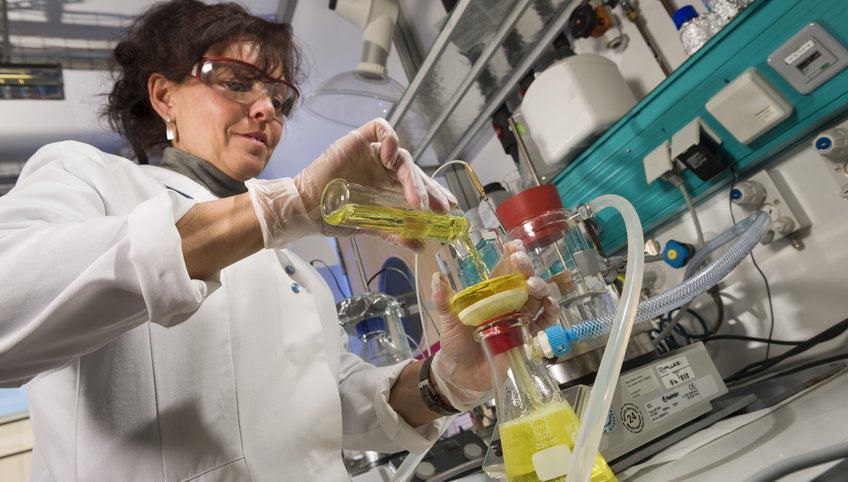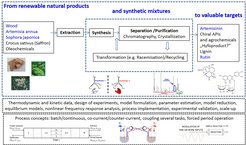
Research directions
Rational development and optimization of separation and reaction processes require numerous thermodynamic and kinetic parameters. Due to the fact that many of these parameters are not readily available, one significant area of activity for the PCF group focus is identifying and applying suitable experimental methods capable of ascertaining specific physical and chemical data. These data are then applied in appropriate mathematical models in order to quantify and evaluate new process options. Most of our efforts are devoted to implementing and experimentally validating promising process options.
With regard to separation processes, our focus is on solving two types of challenging generic problems that require improved resolution methods. One type is related to the separation of very similar molecules, such as isomers or in particular enantiomers. Here, often only a relative small number of components are present but the concentrations of the “contaminants” are typically as high as the target component concentrations.
The second difficult separation problem consists in isolating a specific target component with high purity from a mixture, containing a large number of other components, e.g. specific natural products present in plant extracts or a biomolecule present in a fermentation broth. In these cases the target components are frequently present only in low concentrations. We developed recently new purification concepts for three different natural products (artemisinin, curcumin and rutin). A highlight was the discovery of the potential for exploiting chlorophyll, extracted from plant leaves together with the target molecules, as an efficient and literally green photocatalyst.

